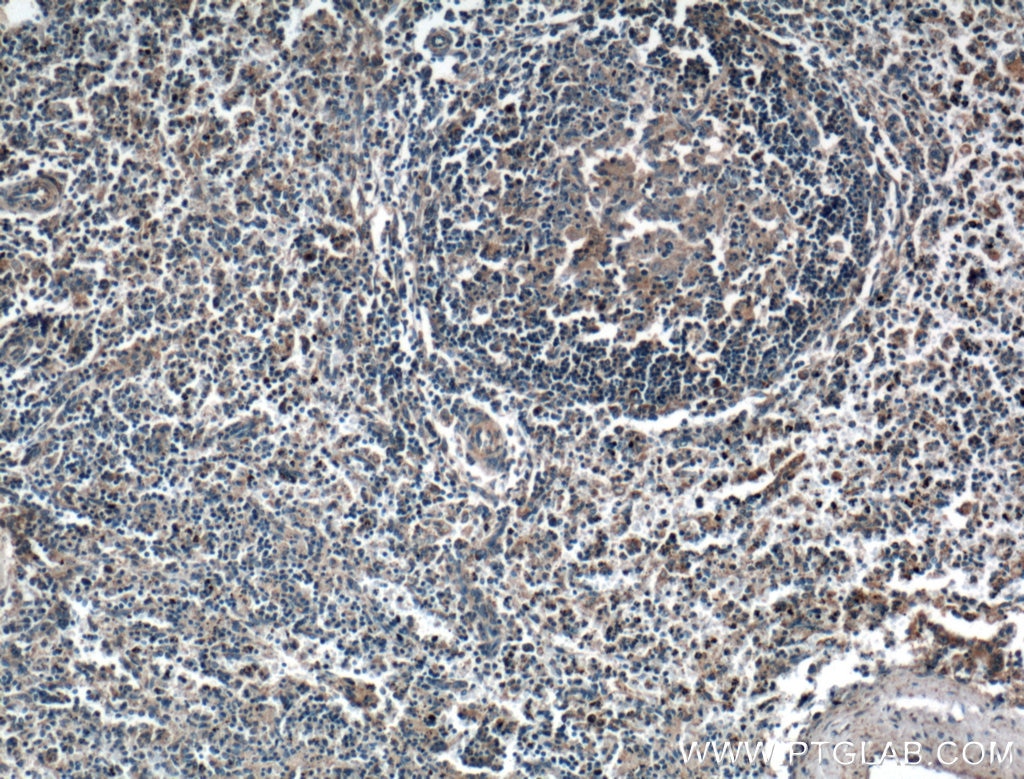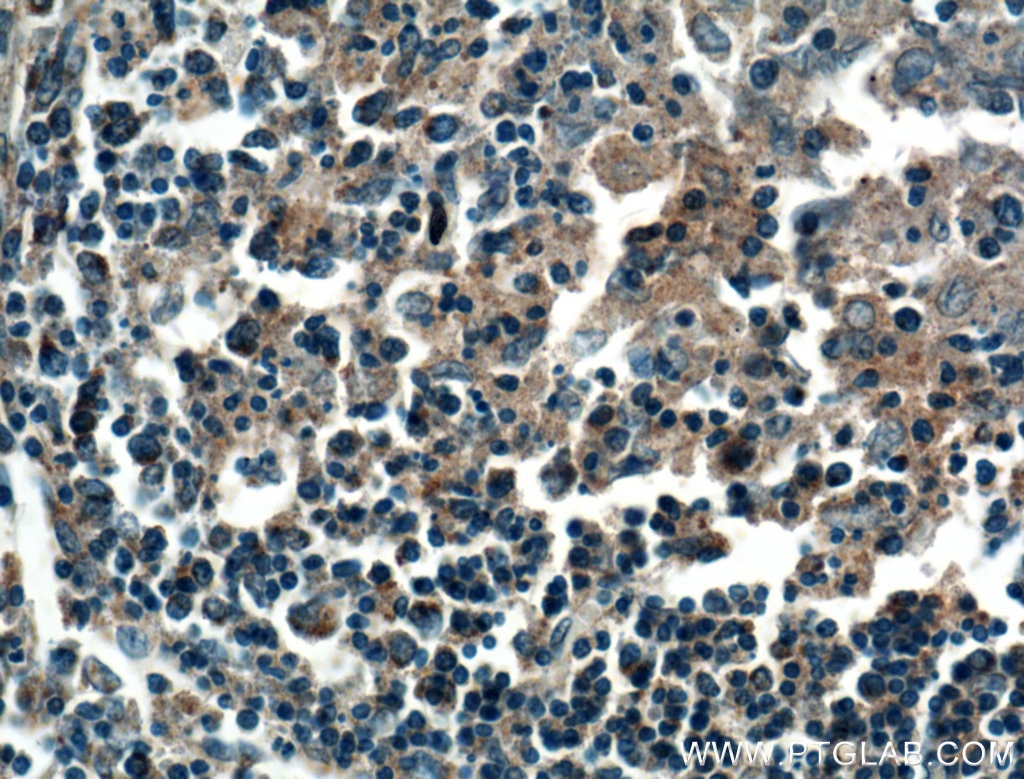Anticorps Polyclonal de lapin anti-HVEM/TNFRSF14
HVEM/TNFRSF14 Polyclonal Antibody for IHC, ELISA
Hôte / Isotype
Lapin / IgG
Réactivité testée
Humain et plus (1)
Applications
WB, IHC, ELISA
Conjugaison
Non conjugué
N° de cat : 10138-1-AP
Synonymes
Galerie de données de validation
Applications testées
| Résultats positifs en IHC | tissu splénique humain, il est suggéré de démasquer l'antigène avec un tampon de TE buffer pH 9.0; (*) À défaut, 'le démasquage de l'antigène peut être 'effectué avec un tampon citrate pH 6,0. |
Dilution recommandée
| Application | Dilution |
|---|---|
| Immunohistochimie (IHC) | IHC : 1:50-1:500 |
| It is recommended that this reagent should be titrated in each testing system to obtain optimal results. | |
| Sample-dependent, check data in validation data gallery | |
Applications publiées
| WB | See 2 publications below |
| IHC | See 2 publications below |
Informations sur le produit
10138-1-AP cible HVEM/TNFRSF14 dans les applications de WB, IHC, ELISA et montre une réactivité avec des échantillons Humain
| Réactivité | Humain |
| Réactivité citée | Humain, souris |
| Hôte / Isotype | Lapin / IgG |
| Clonalité | Polyclonal |
| Type | Anticorps |
| Immunogène | HVEM/TNFRSF14 Protéine recombinante Ag0186 |
| Nom complet | tumor necrosis factor receptor superfamily, member 14 (herpesvirus entry mediator) |
| Masse moléculaire calculée | 30 kDa |
| Numéro d’acquisition GenBank | BC002794 |
| Symbole du gène | TNFRSF14 |
| Identification du gène (NCBI) | 8764 |
| Conjugaison | Non conjugué |
| Forme | Liquide |
| Méthode de purification | Purification par affinité contre l'antigène |
| Tampon de stockage | PBS avec azoture de sodium à 0,02 % et glycérol à 50 % pH 7,3 |
| Conditions de stockage | Stocker à -20°C. Stable pendant un an après l'expédition. L'aliquotage n'est pas nécessaire pour le stockage à -20oC Les 20ul contiennent 0,1% de BSA. |
Informations générales
The mammalian tumor necrosis factor receptor (TNFR) family consists of 10 cell-surface proteins that regulate development and homeostasis of the immune system. Member 14 of TNFR (TNFRSF14, also named as TR2, ATAR, HVEA, HVEM, LIGHTR) was also identified as a mediator of herpesvirus entry into mammalian cells. The cytoplasmic region of TNFRSF14 bound to several members of the TNFR-associated factor (TRAF) family, namely TRAF1, TRAF2, TRAF3, and TRAF5. Transient transfection into human 293 cells caused marked activation of nuclear factor- B (NF- B), a transcriptional regulator of multiple immunomodulatory and inflammatory genes.
Protocole
| Product Specific Protocols | |
|---|---|
| IHC protocol for HVEM/TNFRSF14 antibody 10138-1-AP | Download protocol |
| Standard Protocols | |
|---|---|
| Click here to view our Standard Protocols |
Publications
| Species | Application | Title |
|---|---|---|
Cancer Immunol Res Targeting Triple-Negative Breast Cancer with Combination Therapy of EGFR CAR T Cells and CDK7 Inhibition. | ||
Obesity (Silver Spring) Characterization of herpes virus entry mediator as a factor linked to obesity. | ||
EBioMedicine Immune checkpoint molecule herpes virus entry mediator is overexpressed and associated with poor prognosis in human glioblastoma. | ||
Dig Liver Dis Increased expression of TNFRSF14 and LIGHT in biliary epithelial cells of patients with primary sclerosing cholangitis |



